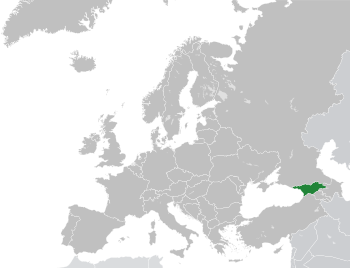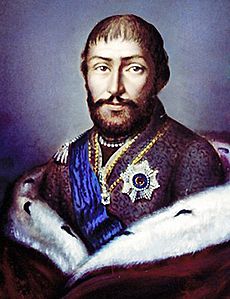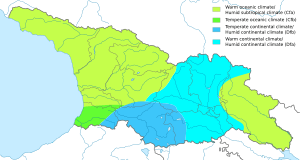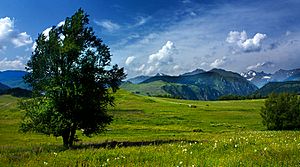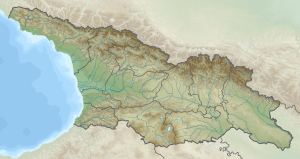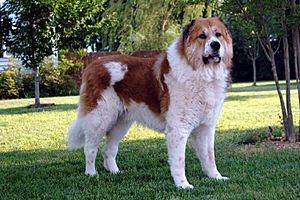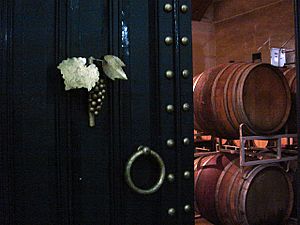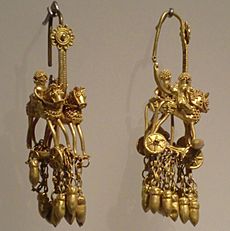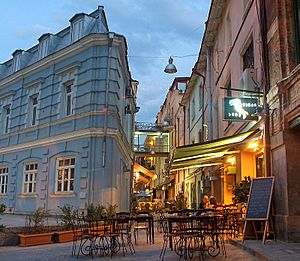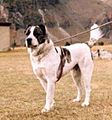Georgia (country) facts for kids
For the US State, please see Georgia (U.S. State)
Quick facts for kids
Georgia
|
|
|---|---|
|
Motto:
ძალა ერთობაშია Dzala ertobashia "Strength is in Unity" |
|
|
Anthem:
თავისუფლება Tavisupleba "Freedom" |
|
|
Georgia in dark green; uncontrolled
territory in light green |
|
| Capital and largest city
|
Tbilisi 41°43′N 44°47′E / 41.717°N 44.783°E |
| Official languages | Georgian |
| Recognised regional languages | Abkhaz |
| Ethnic groups
(2014)
|
|
| Religion
(2014)
|
|
| Demonym(s) | Georgian |
| Government | Unitary parliamentary republic |
| Mikheil Kavelashvili (Disputed) | |
| Irakli Kobakhidze | |
|
• Chairperson of
the Parliament |
Shalva Papuashvili |
| Legislature | Parliament |
| Establishment history | |
|
• Colchis and Iberia
|
13th c. BC – 580 AD |
|
• Kingdom of Abkhazia and Kingdom of the Iberians
|
786–1008 |
|
• Unification of the Georgian realm
|
1008 |
|
• The Tripartite division
|
1463–1810 |
|
• Russian annexation
|
12 September 1801 |
| 26 May 1918 | |
|
• Red Army invasion
|
12 February 1921 |
|
• Georgian SSR
|
25 February 1921 |
|
• Independence from the Soviet Union
• Declared
• Finalized |
9 April 1991 26 December 1991 |
|
• Current constitution
|
24 August 1995 |
| Area | |
|
• Total
|
69,700 km2 (26,900 sq mi) (119th) |
| Population | |
|
• 2022 estimate
|
4,012,104 (126th) |
|
• 2014 census
|
|
|
• Density
|
57.6/km2 (149.2/sq mi) (137th) |
| GDP (PPP) | 2024 estimate |
|
• Total
|
|
|
• Per capita
|
|
| GDP (nominal) | 2024 estimate |
|
• Total
|
|
|
• Per capita
|
|
| Gini (2021) | ▼ 34.2 medium |
| HDI (2022) | very high · 60th |
| Currency | Georgian lari (₾) (GEL) |
| Time zone | UTC+4 (Georgia Time GET) |
| Date format | dd.mm.yyyy |
| Driving side | right |
| Calling code | +995 |
| ISO 3166 code | GE |
| Internet TLD | .ge, .გე |
|
|
Georgia is a country in Eastern Europe, located on the coast of the Black Sea. From 1991 to 1995, its full name was the Republic of Georgia. Since 1995, it has been simply Georgia, as stated in its Constitution. Before 1991, it was part of the Soviet Union. Now, it is an independent republic. The capital city is Tbilisi, and its population is almost 5 million people.
Contents
History of Georgia
The people of Georgia have a very long history. Their capital city, Tbilisi, was started around 400 AD. Before that, western Georgia was part of the Roman Empire. In 635 AD, the Arabs took control. However, Georgian culture continued to grow and thrive through trade.
In the 900s, the Arabs became weaker, and Georgia became its own country again. It was a very important country in the region. But then, the Mongols invaded in 1223. Georgia was part of the Mongolian Empire for about a century, on and off. In 1334, King Giorgi V took back control.
In the 1500s, the Persians invaded Georgia four times. This happened between 1541 and 1544. By 1555, the kings of Kartli ruled under the power of the Persian Shahs.
In 1783, a special agreement called the Treaty of Georgievsk was signed. It was between Catherine the Great of Russia and King Heraclius II of Georgia. This treaty gave Russia the power to protect Georgia. But then, in 1798, the Persians attacked and burned Tbilisi to the ground.
From 1811 to 1918, Georgia was ruled by the Tsar of Russia. Even so, their unique culture stayed strong. From 1918 to 1921, Georgia was independent. After that, it became part of the Soviet Union.
In 1991, Georgia declared its independence from the Soviet Union. It has been its own country ever since. There was a difficult time between 1994 and 1995 when the economy was not doing well. But now, Georgia is a country with strong connections to the United States. They are also trying to join NATO.
In 2008, Georgia was involved in a conflict called the 2008 South Ossetia war.
Geography and Climate
Georgia is located in the South Caucasus region. It lies between 41° and 44° North latitude and 40° and 47° East longitude. The country covers an area of about 67,900 square kilometers (26,216 square miles). It is a very mountainous country. The Likhi Range divides Georgia into eastern and western parts. In the past, western Georgia was known as Colchis, and the eastern part was called Iberia. Because of its many mountains, the northern region of Svaneti is quite separate from the rest of Georgia.
The Greater Caucasus Mountain Range forms Georgia's northern border. The main roads through these mountains into Russia go through the Roki Tunnel and the Darial Gorge. The Roki Tunnel was very important for the Russian military during the 2008 Russo-Georgian War. This is because it is the only direct route through the Caucasus Mountains. The southern part of Georgia is bordered by the Lesser Caucasus Mountains. The Greater Caucasus Mountains are much taller than the Lesser Caucasus Mountains. Their highest peaks rise more than 5,000 meters (16,404 feet) above sea level.
The highest mountain in Georgia is Mount Shkhara, which is 5,068 meters (16,627 feet) tall. The second highest is Mount Janga (Dzhangi–Tau), at 5,059 meters (16,598 feet) above sea level. Other tall peaks include Mount Kazbek (5,047 meters or 16,558 feet), Shota Rustaveli (4,860 meters or 15,945 feet), and Tetnuldi (4,858 meters or 15,938 feet). Only Kazbek is a volcanic mountain. The area between Kazbek and Shkhara has many glaciers. About 30% of all the glaciers in the Caucasus are found in Georgia.
The Lesser Caucasus Mountains describe the high areas of southern Georgia. These are connected to the Greater Caucasus Range by the Likhi Range. This area has many connected mountain ranges and plateaus. They are mostly of volcanic origin and do not go higher than 3,400 meters (11,155 feet). Important features here include the Javakheti Volcanic Plateau and lakes like Tabatskuri and Paravani. There are also mineral water and hot springs. The Southern Georgia Volcanic Highland is a geologically active area. It has had some of the strongest earthquakes recorded in Georgia.
The Krubera Cave is the deepest known cave in the world. It is located in the Arabika Massif in Abkhazia. In 2004, a Ukrainian team explored it to a depth of over 2,000 meters (6,562 feet). In 2005, its known depth reached 2,140 meters (7,021 feet).
Landscapes of Georgia
Georgia has a very diverse landscape. Western Georgia has low-land marsh-forests, swamps, and temperate rainforests. It also has areas of eternal snow and glaciers. The eastern part of the country even has small areas of dry plains. Forests cover about 40% of Georgia's land. High mountain areas, called alpine or subalpine zones, make up about 10% of the land.
Much of the natural habitat in western Georgia's lowlands has disappeared. This is due to farming and city growth over the last 100 years. Most of the forests that once covered the Colchis plain are now gone. Only areas in national parks and reserves remain. Today, most forests are found in the foothills and mountains. Western Georgia's forests below 600 meters (1,969 feet) are mostly deciduous trees. These include oak, hornbeam, beech, elm, ash, and chestnut. Some evergreen plants can also be found. About 1,000 of Georgia's 4,000 higher plant species are found only in this country.
The western slopes of the Meskheti Range in Ajaria have temperate rain forests. Other places like Samegrelo and Abkhazia also have them. Between 600 and 1,000 meters (1,969-3,281 feet) above sea level, the forests become a mix of broad-leaf and coniferous trees. These are mainly beech, spruce, and fir forests. From 1,500 to 1,800 meters (4,921-5,906 feet), the forest is mostly coniferous. The tree line usually ends around 1,800 meters (5,906 feet). Above this, the alpine zone begins, extending up to about 3,000 meters (9,843 feet). Above 3,000 meters, there is eternal snow and glaciers.
Eastern Georgia's landscape is quite different from the west. Like the Colchis plain in the west, most low-lying areas in eastern Georgia have been cleared for farming. This includes the Mtkvari and Alazani River plains. Also, because the climate is drier, some low plains were never covered by forests.
The landscape of eastern Georgia has many valleys and gorges. These are separated by mountains. Unlike western Georgia, almost 85% of the forests here are deciduous. Coniferous forests are only common in the Borjomi Gorge and far western areas. Among deciduous trees, beech, oak, and hornbeam are most common. Other trees include different types of maple, aspen, ash, and hazelnut. The Upper Alazani River Valley has yew forests.
At higher elevations above 1,000 meters (3,281 feet), especially in the Tusheti, Khevsureti, and Khevi regions, pine and birch forests are common. Generally, forests in eastern Georgia are found between 500 and 2,000 meters (1,640-6,562 feet) above sea level. The alpine zone extends from 2,000–2,300 meters (6,562–7,546 feet) to 3,000–3,500 meters (9,843–11,483 feet). The only large, low-land forests left are in the Alazani Valley of Kakheti. The zone of eternal snow and glaciers is above 3,500 meters (11,483 feet) in most parts of eastern Georgia.
Georgia's Climate
The climate in Georgia is very varied, even though the country is small. There are two main climate zones. These roughly match the eastern and western parts of the country. The Greater Caucasus Mountain Range helps to keep Georgia's climate mild. It protects the country from cold air coming from the north. The Lesser Caucasus Mountains partly protect the region from dry, hot air from the south.

Much of western Georgia is in the northern part of the humid subtropical zone. It gets a lot of rain, from 1,000 to 4,000 millimeters (39 to 157 inches) each year. Rain usually falls evenly throughout the year. However, it can be especially heavy during the autumn months. The climate in this region changes a lot with how high up you are. Most lowland areas in western Georgia are warm all year. But the foothills and mountains have cool, wet summers and snowy winters. Snow can often be more than 2 meters (6.6 feet) deep in many areas. Ajaria is the wettest region in the Caucasus. The Mt. Mtirala rainforest there gets about 4,500 millimeters (177 inches) of rain per year.
Eastern Georgia has a climate that changes from humid subtropical to continental. Its weather is affected by dry air from the Caspian Sea in the east. It is also affected by humid air from the Black Sea in the west. The humid air from the Black Sea is often blocked by mountain ranges. These include the Likhi and Meskheti ranges. They separate the eastern and western parts of the country. Annual rainfall is much less than in western Georgia. It ranges from 400 to 1,600 millimeters (16 to 63 inches).
The wettest times are usually in spring and autumn. Winter and summer months tend to be the driest. Most of eastern Georgia has hot summers, especially in the lowlands. Winters are relatively cold. Just like in the west, elevation plays a big role in eastern Georgia. Climates above 1,500 meters (4,921 feet) are much colder than in the low-lying areas. Regions above 2,000 meters (6,562 feet) often have frost even in the summer.
Wildlife and Plants
Georgia has a wide variety of animals because of its diverse landscapes and location. It is home to about 5,601 species of animals. This includes 648 species of vertebrates (animals with backbones). Many of these species are found only in Georgia. Large carnivores like Brown bears, wolves, lynxes, and Caucasian Leopards live in the forests. The common pheasant is a bird native to Georgia. It has been introduced around the world as a popular game bird. There are many invertebrates (animals without backbones), but information about them is spread across many different studies. For example, Georgia has 501 known species of spiders.
More than 6,500 species of fungi have been found in Georgia. This number is likely much higher, as only about 7% of all fungi worldwide have been discovered. Scientists have also tried to guess how many fungal species are unique to Georgia. They have identified 2,595 species that might be found only in the country. There are 1,729 plant species in Georgia that are known to live with fungi. The actual number of plant species in Georgia is probably much higher.
Economy
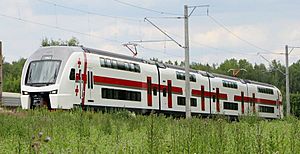
History shows that Georgia has traded with many lands and empires for a long time. This is mainly because of its location on the Black Sea and later on the famous Silk Road. Gold, silver, copper, and iron have been mined in the Caucasus Mountains. Making Georgian wine is a very old tradition and a key part of the country's economy. Georgia also has a lot of hydropower resources, which means it can make electricity from water. For a long time, farming and tourism have been very important to Georgia's economy. This is thanks to its good climate and varied landscape.
For most of the 20th century, Georgia's economy was part of the Soviet system. This was a command economy, where the government controlled everything. After the Soviet Union fell apart in 1991, Georgia started big changes to become a free market economy. Like other countries that were once part of the Soviet Union, Georgia faced a very difficult economic period. A civil war and conflicts in South Ossetia and Abkhazia made things even worse. Farming and industry produced much less. By 1994, the country's total economic output was only a quarter of what it was in 1989. The first financial help from other countries came in 1995. The World Bank and International Monetary Fund gave Georgia $206 million. Germany also gave 50 million Deutsche Mark.
Since the early 2000s, Georgia's economy has improved a lot. In 2007, Georgia's economy grew by 12%. This made it one of the fastest growing economies in Eastern Europe. The World Bank even called Georgia "the number one economic reformer in the world." This was because it moved from 112th to 18th place in the Ease of Doing Business Index in just one year. The country still has a high unemployment rate of 12.6%. Its average income is also quite low compared to other European countries.
Georgia is becoming more connected to the global trading world. In 2015, its imports were 50% of its total economy, and its exports were 21%. Georgia mainly imports fuels, vehicles, machinery, food, and medicines. Its main exports are vehicles, ferro-alloys, fertilizers, nuts, scrap metal, gold, and copper ores.
People and Languages

Like most native Caucasian peoples, Georgians do not easily fit into the main ethnic groups of Europe or Asia. The Georgian language is the most common of the Kartvelian languages. It is not an Indo-European, Turkic, or Semitic language. It is believed that today's Georgian nation came from a mix of original people and immigrants. These immigrants moved into the South Caucasus from Anatolia a very long time ago.
Ethnic Georgians make up about 86.8% of Georgia's population. In 2014, the total population was 3,713,804. Other ethnic groups include Abkhazians, Armenians, Azerbaijanis, Greeks, Jews, Kists, Ossetians, Russians, Ukrainians, and Yezidis. The Georgian Jews are one of the oldest Jewish communities in the world. Georgia also used to have many ethnic German communities. However, most Germans were sent away during World War II.
The most common language group is the Kartvelian family. This group includes Georgian, Svan, Mingrelian, and Laz. The official languages of Georgia are Georgian. Abkhaz also has official status in the Abkhazia region. Georgian is the main language for 87.7% of the people. After that, 6.2% speak Azerbaijani, 3.9% speak Armenian, 1.2% speak Russian, and 1% speak other languages.
Culture
Georgian culture has developed over thousands of years. It started from the ancient Iberian and Colchian civilizations. In the 11th century, Georgian culture had a "golden age." This was a time of great growth in classical literature, arts, philosophy, architecture, and science. Georgian culture was influenced by Classical Greece, the Roman Empire, the Byzantine Empire, and various Iranian empires. Later, from the 19th century, it was also influenced by the Russian Empire.
The Georgian language and its classical literature, especially the poet Shota Rustaveli, became popular again in the 19th century. This happened after a long period of trouble. This revival laid the foundation for modern writers like Grigol Orbeliani, Nikoloz Baratashvili, Ilia Chavchavadze, Akaki Tsereteli, and Vazha-Pshavela. The Georgian language is written in three unique scripts. Old stories say that King Pharnavaz I of Iberia created these scripts in the 3rd century BC.
Georgia is famous for its folklore, traditional music, dances, theater, movies, and art. Famous painters from the 20th century include Niko Pirosmani, Lado Gudiashvili, and Elene Akhvlediani. Well-known ballet choreographers are George Balanchine, Vakhtang Chabukiani, and Nino Ananiashvili. Important poets include Galaktion Tabidze, Lado Asatiani, and Mukhran Machavariani. Famous theater and film directors include Robert Sturua, Tengiz Abuladze, Giorgi Danelia, and Otar Ioseliani.
Architecture and Arts
Georgian architecture has been shaped by many different civilizations. There are several unique architectural styles for castles, towers, fortifications, and churches. The old buildings in Upper Svaneti and the castle town of Shatili in Khevsureti are great examples of medieval Georgian castle architecture. Other famous architectural places in Georgia include Rustaveli avenue in Tbilisi, built in the Haussmann style, and the Old Town District.
Georgian church art is a very special part of Georgian Christian architecture. It combines the classic dome style with the original basilica style. This creates what is known as the Georgian cross-dome style. Cross-dome architecture started in Georgia in the 9th century. Before that, most Georgian churches were basilicas. You can find other examples of Georgian church architecture outside Georgia. These include Bachkovo Monastery in Bulgaria, Iviron monastery in Greece, and the Monastery of the Cross in Jerusalem. One of the most famous Georgian artists from the late 19th and early 20th centuries was the primitivist painter Niko Pirosmani.
Music
Georgia has a very old musical tradition. It is mostly known for its early development of polyphony, which means music with many independent melodies played at the same time. Georgian polyphony uses three vocal parts. It has a special tuning system and a unique harmony with many parallel fifths and dissonances. Three types of polyphony grew in Georgia: a complex one in Svaneti, a dialogue style over a bass in Kakheti, and a three-part, partly improvised style in western Georgia. The Georgian folk song "Chakrulo" was one of 27 songs sent into space on the Voyager Golden Records in 1977.
Cuisine
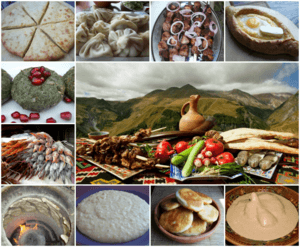
Georgian cuisine (food) and wine have changed over hundreds of years. They have adapted traditions in every period. One of the most unique dining traditions is the supra, or Georgian table. This is also a way for friends and family to socialize. The leader of the supra is called the tamada. He leads the philosophical toasts and makes sure everyone is having a good time. Different regions of Georgia are known for their special dishes. For example, khinkali (meat dumplings) come from eastern mountainous Georgia. Khachapuri (cheese bread) is mainly from Imereti, Samegrelo, and Adjara. Besides traditional Georgian dishes, foods from other countries have also come to Georgia. These were brought by immigrants from Russia, Greece, and recently China.
Related pages
Images for kids
-
"Gorgania" (Georgia) on the Fra Mauro map.
-
A Patera (dish) showing Marcus Aurelius, found in central Georgia, from the 2nd century AD.
-
Northwestern Georgia has medieval defensive Svan towers in Ushguli.
-
Gelati Monastery, a UNESCO World Heritage Site.
-
Queen Tamar, the first woman to rule medieval Georgia on her own.
-
Noe Zhordania, Prime Minister of Georgia, who went to France after the Soviet takeover.
-
The Bolshevik Red Army in Tbilisi on February 25, 1921.
-
The Rose Revolution in 2003.
-
US Secretary of State Condoleezza Rice with Georgian president Mikheil Saakashvili during the Russo-Georgian war.
-
Map of Georgia showing the disputed areas of Abkhazia and Tskhinvali Region (South Ossetia).
-
The Georgian Railways are a key link between the Black Sea and Caspian Sea.
-
An Illuminated manuscript from medieval Georgia, showing a scene from the nativity.
-
Traditional supras often serve all food at once, instead of in separate courses.
See also
 In Spanish: Georgia para niños
In Spanish: Georgia para niños





